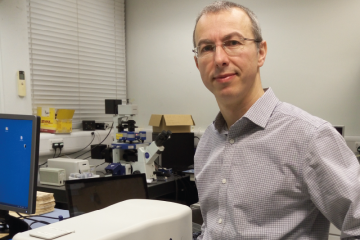Project grant
Live monitoring of foreign-body response in animals by diffuse Raman spectroscopy

At a glance
In progress
Award date
October 2021 - March 2026
Grant amount
£506,474
Principal investigator
Professor Ioan Notingher
Co-investigator(s)
Institute
University of Nottingham
R
- Reduction
Read the abstract
View the grant profile on GtR
